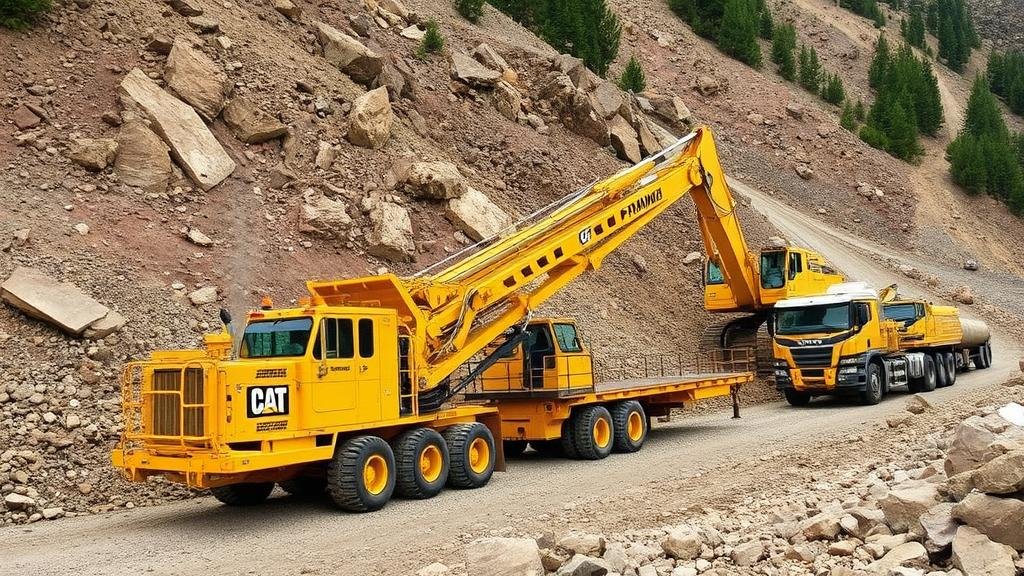How to Use Incline Hauling Systems for Steep Ore Passes
How to Use Incline Hauling Systems for Steep Ore Passes
Incline hauling systems are essential components in mining operations, particularly for transporting ore and waste material through steep passes. These systems improve operational efficiency and safety while minimizing the environmental impact associated with traditional hauling methods. This article explores the mechanisms of incline hauling systems, their advantages, and practical applications in mining, specifically concerning steep ore passes.
Understanding Incline Hauling Systems
Incline hauling systems utilize various mechanisms, including cable cars, conveyor belts, and aerial tramways, to move materials along a slope. e systems are designed to handle the challenges presented by steep gradients, which can often exceed 25 degrees.
The core components of incline hauling systems typically include:
- Haulage Equipment: This includes cable winches, conveyor belts, or tramway cars designed to withstand high loads over challenging terrains.
- Support Structures: These structures ensure stability and safety, incorporating towers, pulleys, and intermediate supports that meet the operational demands.
- Control Systems: Advanced monitoring and control systems enhance safety and efficiency, providing real-time data on load, speed, and system integrity.
Advantages of Incline Hauling Systems
Incline hauling systems offer numerous benefits over conventional transportation methods. Some of the key advantages include:
- High Efficiency: The ability to transport large quantities of ore quickly, significantly reducing the time required for hauling operations.
- Reduced Environmental Impact: Unlike heavy trucks that may generate significant emissions and disturbances, incline hauling systems are generally quieter and present a smaller footprint.
- Lower Operating Costs: Operating costs are often reduced through decreased labor requirements and minimized maintenance expenses associated with wear and tear on heavy-duty vehicles.
Real-World Applications: Case Studies
Several mining companies worldwide have successfully implemented incline hauling systems in their operations. For example, the Grasberg Mine in Indonesia employs an incline conveyor system to efficiently transport ore from steep underground levels to surface processing facilities. This system is vital for maintaining high production levels while ensuring safety in steep mining conditions.
Another illustrative case is the use of aerial tramways in the Sierra Nevada region, where steep gradients make traditional hauling impractical. These systems have enabled the efficient transport of ore and personnel to remote areas while minimizing road construction costs and environmental disruption.
Key Considerations for Useation
When integrating incline hauling systems into existing mining operations, several factors must be considered to ensure optimal performance:
- Terrain Analysis: A thorough geological survey will help identify the most suitable locations for installation, considering both the angle and stability of slopes.
- Load Capacity: Forecast the expected loads and choose equipment that can sustain these demands without compromising safety or efficiency.
- Regulatory Compliance: Ensure that all systems meet local and international safety and environmental regulations.
- Training and Maintenance: Ongoing training for personnel and scheduled maintenance are crucial for the long-term reliability of incline hauling systems.
Conclusion
Incline hauling systems are indispensable for modern mining operations dealing with steep ore passes. Their efficiency, cost-effectiveness, and environmental benefits make them a preferable choice over traditional methods. As the mining industry continues to evolve, coupled with advances in technology and infrastructure, adopting incline hauling systems will likely become increasingly prominent.
In summary:
- Assess the terrain and requirements diligently before implementation.
- Invest in high-quality equipment and reliable control systems.
- Prioritize training and regular maintenance to maximize system longevity.
By leveraging the advantages of incline hauling systems, mining operations can improve productivity while maintaining safety and environmental stewardship.



